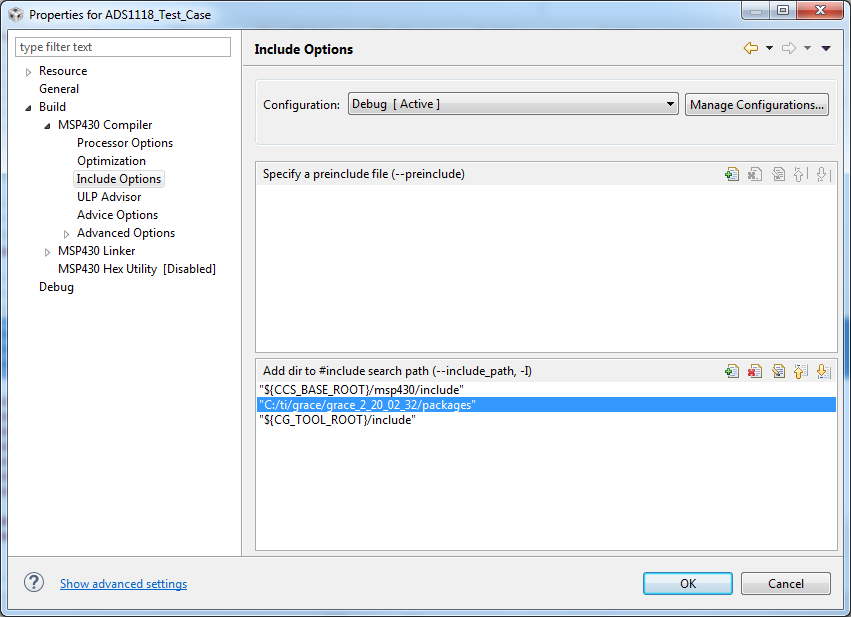I am attempting to modify the firmware shipped with the ADS1118 BoosterPack. I have downloaded the compiled firmware and am able to flash this to the program ROM, but I am unable to work with the source file in Code Composer Studio.
I am looking for a step-by-step guide or someone to aid in configuring code composer studio that will allow me to edit, build and debug the firmware source code provided by TI.
The only relevant information I am able to find is from the Users Guide, section 6. However, this only goes so far as to state that the source code project was compiled with CCS 5.3. There seem to be some dependencies which I am a) not understanding and b) I am not loading. I suspect I need to be properly loading Grace (I do not know what this product or plugin does or why its needed), MSP430ware (again, I don't know what this is, or if its binary files or C libraries), and driverlib (again, confusion on my end).
If someone could provide a walkthrough for setting up CCS to be able to edit, compile & debug the provided firmware, I would greatly appreciate it. I tried helping a student for quite some time yesterday, but found the CCS project management a bit confusing.
Many thanks.
-S Thomas


